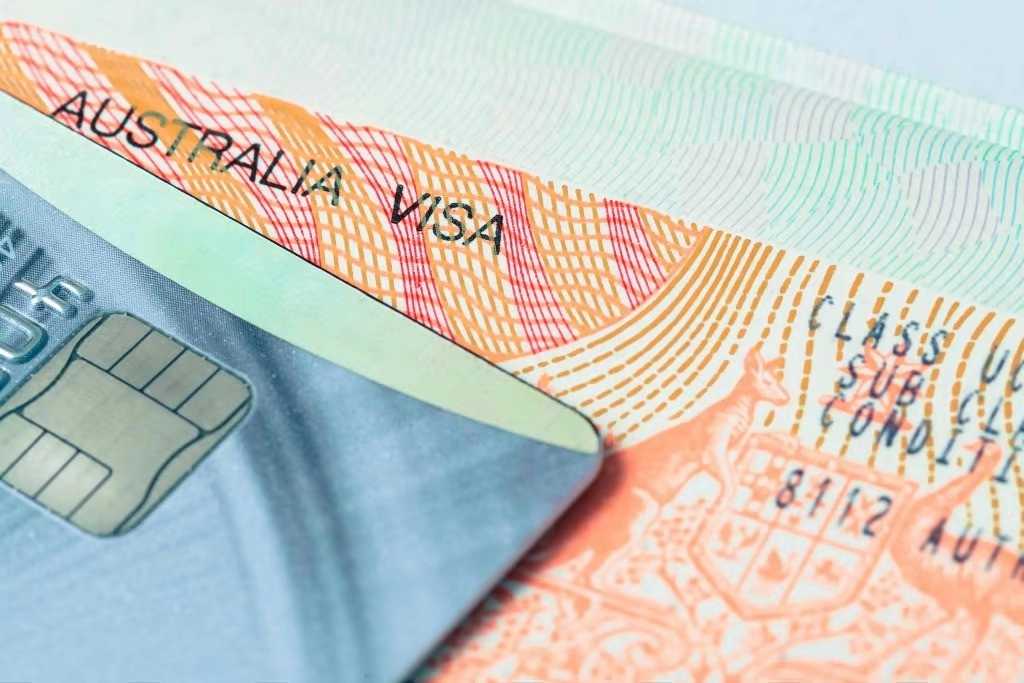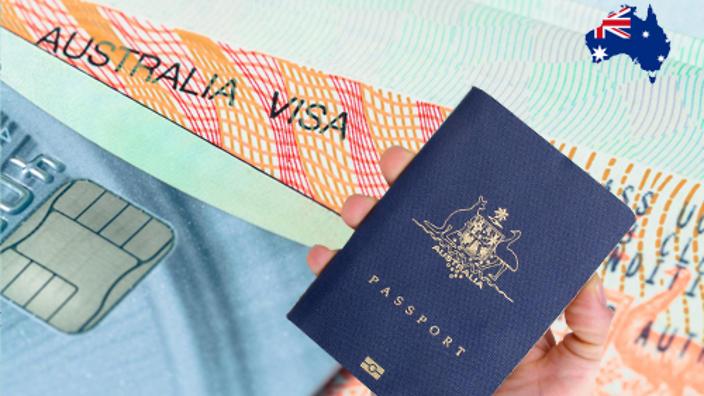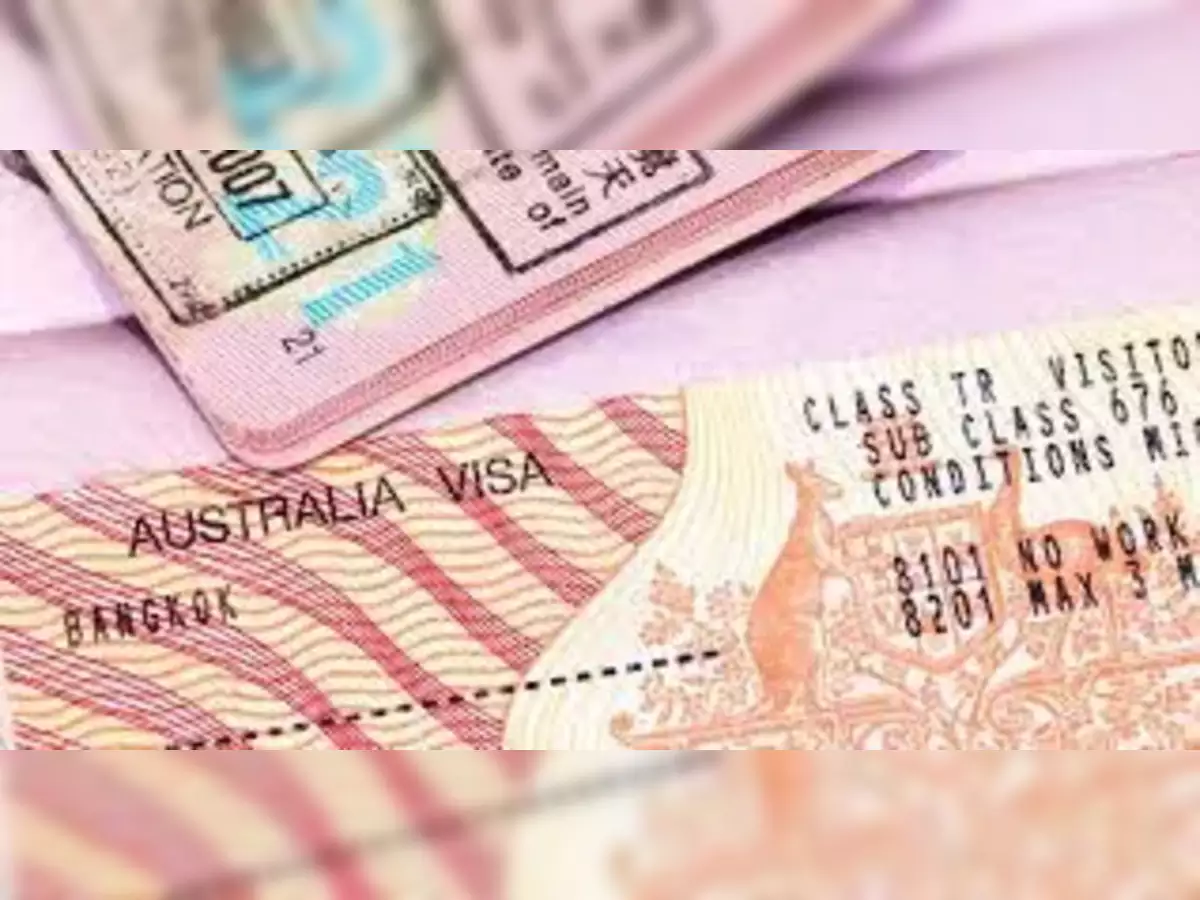No, it’s typically not possible to change a tourist visa to a work visa within Australia. To work legally in Australia, individuals must apply for a work visa before entering the country.
Australia’s immigration system requires most people to plan and secure a work visa from their home country or while they are outside of Australia. Attempting to change your visa status from a tourist visa to a work visa once you’re already in Australia can be complex and is generally not permitted.
To work in Australia legally, it’s essential to identify the specific work visa that matches your qualifications, secure employment with an Australian employer willing to sponsor your application, and ensure you meet the eligibility criteria while following the application process from your home country.
What Are the Different Australian Visa Types and Their Eligibility Criteria?

Australia offers diverse visa types to cater to different purposes and needs. These visa categories are crucial, especially if you are considering changing your visa from a tourist visa to a work visa.
Visitor Visa (Subclass 600)
The Visitor Visa is typically what tourists use when they first come to Australia. It allows you to stay in the country for tourism, visiting family or friends, or other short-term purposes. This visa is generally valid for 3, 6, or 12 months.
Work and Holiday Visa (Subclass 462 and 417)
The Work and Holiday visas are designed for young adults aged 18 to 30 (depending on your country of origin) who wish to work and travel in Australia. These visas allow you to engage in short-term employment to support your travels.
Student Visa (Subclass 500)
If you plan to study in Australia, the Student Visa is what you’ll need. It permits you to enroll in a course of study at an Australian educational institution. The length of your stay will depend on your course duration.
Temporary Skill Shortage Visa (Subclass 482)
The Temporary Skill Shortage Visa is for skilled workers who have been sponsored by an Australian employer. It allows you to work in your nominated occupation for your sponsor while living in Australia. This visa is usually valid for up to four years.
Employer Nomination Scheme Visa (Subclass 186)
The Employer Nomination Scheme Visa is a permanent residency visa that allows skilled workers to live and work in Australia. To obtain this visa, you need to be nominated by an Australian employer and meet specific skill and work experience requirements.
Partner Visa (Subclasses 309 and 820, 100, 801)
If you have an Australian partner, you can apply for a Partner Visa, which can eventually lead to permanent residency. These visas allow you to live, work, and study in Australia while being with your partner.
Business Innovation and Investment Visa (Subclasses 188 and 888)
These visas are for entrepreneurs, investors, and business owners who want to establish or manage a business in Australia. The duration and eligibility criteria for these visas vary depending on the specific subclass.
Protection Visa (Subclass 866)
A Protection Visa is for people who are refugees or need protection because they fear persecution, torture, or cruel treatment in their home country. This visa provides the right to stay in Australia and eventually apply for permanent residency.
However, these Australian visa types are the first step in determining whether you can change your tourist visa to a work visa. It’s essential to identify the visa category that aligns with your goals and eligibility, ensuring a smooth and legal transition in Australia. Always consult with the Australian Department of Home Affairs or a migration agent for the most up-to-date information and advice tailored to your situation.
What Are The Eligibilities For Changing Visa Types?
If you’re considering changing your visa type in Australia, it’s crucial to understand the eligibility criteria involved. Not all visa changes are straightforward, and meeting these criteria is essential for a successful transition.
Current Visa Type: Your eligibility to change visa types often depends on your current visa. For example, transitioning from a tourist visa to a work visa may have different requirements than changing from a student visa to a work visa.
Visa Expiry: Check the expiry date of your current visa. It’s essential to apply for a new visa before your current one expires to maintain your lawful status in Australia.
Skills and Qualifications: For work visas, you must possess the skills and qualifications required for the nominated occupation. Employers often need to demonstrate that there is a genuine need for your skills in their business.
Health and Character Requirements: Applicants are typically required to meet health and character requirements. This includes a medical examination and a police clearance certificate. Failing these requirements can affect your eligibility.
Employer Sponsorship: If you’re applying for a work visa, your eligibility might hinge on an Australian employer sponsoring you. The employer may need to prove that they couldn’t find a suitable Australian worker for the position.
English Language Proficiency: Some visas may require a certain level of English language proficiency. You might need to take an English language test like IELTS or provide other evidence of your language skills.
Financial Capacity: Depending on the visa type, you may need to prove that you have enough funds to support yourself and any dependents while in Australia.
Duration of Stay: Ensure that you understand the maximum duration you can stay on your new visa. Some visas are temporary, while others can lead to permanent residency.
Visa Application Fees: Different visa types have varying application fees. Ensure you can afford the fees associated with your chosen visa.
Consult a Migration Agent: It’s highly recommended to consult a registered migration agent or the Australian Department of Home Affairs to navigate the visa change process. They can provide tailored advice based on your unique circumstances.
Which work visa is easiest to get in Australia?
In Australia, the ease of obtaining a work visa can vary depending on your individual circumstances, qualifications, and the specific visa requirements. While there isn’t one “easiest” work visa for everyone, some visas may be more accessible to certain individuals. Here are a few work visas that are relatively straightforward for specific categories of applicants
Working Holiday Visa (Subclass 417 and 462)
- These visas are typically easier to obtain for young adults (18 to 30 or 35 years old, depending on your country of origin).
- They allow you to work and travel in Australia for up to two years.
- There is no requirement for employer sponsorship, making them accessible to individuals looking for short-term work experiences.
Temporary Skill Shortage Visa (Subclass 482)
- This visa is relatively accessible for skilled workers who have a job offer from an Australian employer.
- The employer must sponsor the applicant, and the occupation must be on the relevant skilled occupations list.
- It can lead to long-term work opportunities in Australia.
Graduate Temporary Visa (Subclass 485)
- Graduates from Australian institutions can apply for this visa, which allows them to work temporarily in Australia.
- The Graduate Temporary Visa has two streams: the Graduate Work stream and the Post-Study Work stream, both designed to provide work experience for recent graduates.
Skilled Independent Visa (Subclass 189)
- This is a permanent residency visa, and it’s available to skilled workers who meet specific criteria, such as having skills in occupations listed on the Skilled Occupation List (SOL).
- You do not need employer sponsorship for this visa, making it accessible to those who meet the skill and experience requirements.
How Can I Effectively Research Job Opportunities in Australia?
If you’re considering changing your visa from tourist to work in Australia, one of the essential steps is to research job opportunities that align with your qualifications and career goals.
Job Search Websites: Utilize popular job search websites such as Seek, Indeed, and LinkedIn. These platforms feature a wide range of job listings across various industries. You can filter results based on your skills, location, and job type.
Company Websites: Visit the websites of Australian companies or organizations you’re interested in. Many companies post job vacancies directly on their websites. Look for a “Careers” or “Jobs” section.
Recruitment Agencies: Consider working with recruitment agencies that specialize in your field. They can help match your skills with job opportunities and provide valuable insights into the job market.
Networking: Networking can be incredibly valuable in Australia. Attend industry events, conferences, and seminars. Connect with professionals on LinkedIn, and join local business and industry associations.
Australian Government Resources: The Australian government provides resources for job seekers. The JobSearch website and the Australian Apprenticeships website offer information on job vacancies, apprenticeships, and more.
Professional Associations: If you’re in a specialized field, check if there are professional associations related to your industry in Australia. They often share job listings and provide networking opportunities.
Company Directories: Explore directories and listings of companies operating in Australia. Contacting these companies directly can sometimes yield job opportunities.
Local Newspapers: Local newspapers may feature job listings specific to your region. Don’t overlook this traditional source of job advertisements.
Online Forums and Social Media Groups: Join online forums and social media groups related to your industry or profession. These platforms can be excellent sources of job leads and advice.
Government Sponsored Programs: Some visas, such as the Temporary Skill Shortage Visa (Subclass 482), may require you to find a sponsor. Research industries and regions where there is a demand for your skills and seek potential sponsors in those areas.
How Long Does It Take to Change tourist Visas to Work Visas in Australia?
Processing times for work visas in Australia can vary significantly based on several factors, including the specific type of visa you are applying for and your individual circumstances.
First, the processing time varies depending on the work visa subclass. Some visas are known for faster processing, while others may take longer. For example, the Working Holiday Visa is often processed in about 2 weeks, while visas like the Skilled Regional (Provisional) Visa might take approximately 2-3 months.
Additionally, submitting a thorough and accurate application with all the required documentation is essential to expedite the process. Missing or incorrect information can lead to processing delays.
The overall demand for a specific work visa subclass can influence processing times. Higher demand may result in longer processing times.
However, some work visas require applicants to undergo health examinations and provide police clearance certificates. The time needed to complete these checks can add to the overall processing time.
Moreover, If your situation involves unique circumstances, it may take longer to process your application as it requires additional scrutiny.
Step-by-step process to change your tourist visa to a work visa in Australia

Determine Eligibility
Before proceeding, ensure that you meet the eligibility criteria for the work visa you intend to apply for. This includes qualifications, skills, and the type of work you plan to undertake.
Select the Right Visa Type:
Identify the specific work visa subclass that matches your skills and occupation. Common work visas include the Temporary Skill Shortage Visa (Subclass 482), Employer Nomination Scheme Visa (Subclass 186), and others.
Find an Employer Sponsor:
To transition to a work visa, you typically need an Australian employer to sponsor your application. You’ll need a job offer and sponsorship from the employer.
Collect Required Documents:
Gather all necessary documents, which may include your passport, educational and professional certificates, evidence of job offer, English language proficiency test results (if required), health checks, and character certificates.
Online Application:
Create an ImmiAccount on the official website of the Australian Department of Home Affairs.
Fill out the online application form for the specific work visa you’re applying for.
Pay the application fee, which varies depending on the visa type and any additional services you may require.
Health and Character Checks:
Depending on your visa type, you may need to undergo health and character checks. Attend medical examinations and obtain police clearance certificates if required.
Skills Assessment (if applicable):
Some work visas require a skills assessment by a relevant assessing authority. Ensure you meet these requirements and complete the assessment if necessary.
Application Submission:
Submit your online visa application, including all supporting documents and fees. Ensure that your application is complete and accurate.
Application Processing:
Your application will be processed by the Australian Department of Home Affairs. Processing times can vary, so monitor the progress through your ImmiAccount.
Visa Grant:
Once your visa application is approved, you will receive a visa grant notification. This will include details of your visa and any conditions attached.
Travel to Australia:
If you are outside Australia when your visa is granted, you can make arrangements to travel to the country.
Visa Conditions and Compliance:
Abide by the conditions of your work visa. These conditions may include the type of work you can engage in, study limitations, and the duration of your stay.
Visa Renewal and Extensions:
If your work visa has a finite duration, be proactive about renewing or extending it if you plan to continue working in Australia.
Maintain Legal Status:
Ensure you maintain your legal status in Australia. Overstaying your visa can have serious consequences.
Consider Seeking Legal Advice:
If you encounter challenges during the process or have specific concerns, consider consulting a registered migration agent for professional guidance.
FAQ
Can tourist visa be converted to work visa?
No, in most cases, a tourist visa cannot be converted to a work visa in Australia. To work in Australia, individuals typically need to apply for a work visa from their home country or while they are outside of Australia.
Is it difficult to get an Australian work visa?
The difficulty of obtaining an Australian work visa varies depending on factors such as your qualifications, skills, and the demand for your occupation in Australia. Some work visas are relatively more accessible than others.
Can I get a work visa without IELTS in Australia?
While IELTS is commonly used for language proficiency, there are alternatives to demonstrate language skills, and some work visas do not require IELTS.
Who is eligible to work in Australia?
Eligibility to work in Australia depends on your visa status. Australian citizens and permanent residents have unrestricted work rights. Those on work visas have the right to work under the conditions of their specific visa.
Can I get PR in Australia with IELTS?
IELTS results are often a component of points-based immigration programs for Permanent Residency (PR) in Australia. Achieving a certain score in IELTS can earn you points towards PR eligibility.
How do I get PR in Australia?
There are several pathways to obtaining Permanent Residency in Australia, including skilled migration programs, family reunification, and employer-sponsored visas. Meeting the eligibility criteria and securing the necessary points are key to PR application success.
Which is better Australia or Canada?
The choice between Australia and Canada depends on personal preferences, career goals, and individual circumstances. Both countries offer unique advantages and opportunities, and the decision should align with your specific needs.
Who can sponsor PR for Australia?
Sponsorship for Permanent Residency (PR) in Australia can come from family members, employers, or state/territory governments. Each type of sponsorship has its eligibility requirements.
What is the easiest way to move to Australia?
The easiest way to move to Australia depends on your situation. For some, skilled migration through employer sponsorship or state nomination may be the simplest route.
What is the quickest visa for Australia?
The processing time for Australian visas varies, but for some individuals, Working Holiday Visas can be among the quickest to obtain. However, the duration of stay is limited.
Final words
It’s important to understand that changing a tourist visa to a work visa in Australia isn’t a straightforward process. Australia requires most individuals to apply for a work visa from their home country or while they are outside of Australia. Attempting to change your visa type once you’ve entered Australia on a tourist visa can be complex and is generally not permitted.
To work legally in Australia, you should plan ahead and apply for the appropriate work visa that matches your qualifications and job opportunities. This process involves securing employment with an Australian employer willing to sponsor your visa application, ensuring you meet the specific eligibility criteria, and providing the necessary documentation.
While the transition from a tourist visa to a work visa within Australia is generally not allowed, careful planning and professional guidance can help you achieve your goal of working and living Down Under. It’s essential to research the specific work visa subclass that suits your needs and to consult with immigration professionals or legal experts to navigate the application process successfully.



